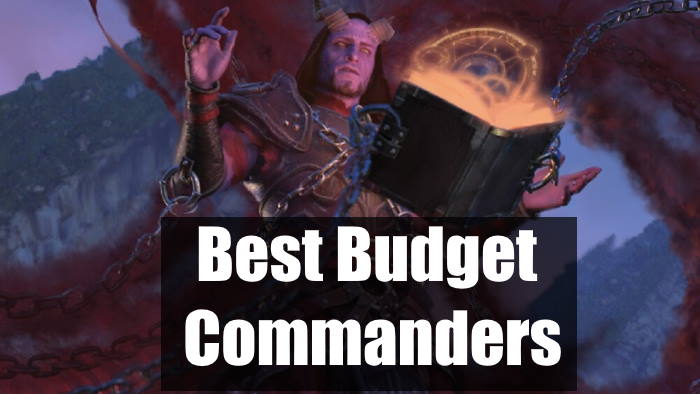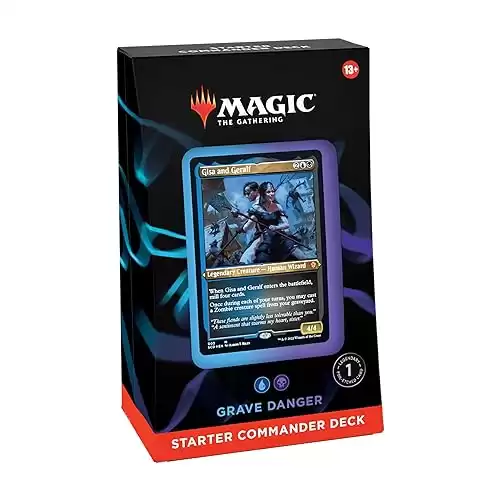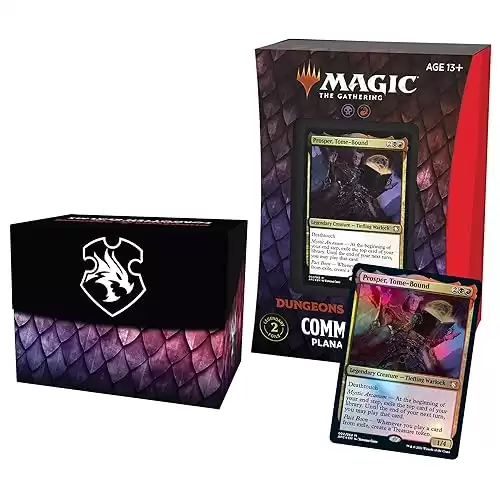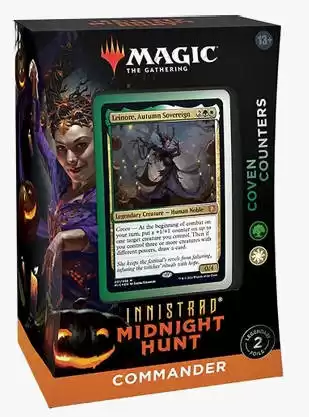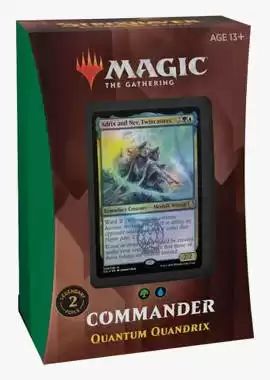Commander is the most popular format in Magic: The Gathering and it’s easy to see why. There are lots of politics and dealmaking, dynamic swings, thrilling comebacks, and exciting gameplay. Furthermore, EDH has the largest card pool of any format with nearly 23,000 cards at the player’s disposal – including some of the rarest, most powerful, and most expensive cards in magic. While this makes the format fun, it also makes deckbuilding quite expensive at times. However, anything is possible in EDH, including powerful decks that won’t break the bank.
I would like to start out by saying that what is considered “budget” will vary from person to person. What seems affordable to some may not be affordable to others. With that said, most of the decks here will be somewhere around the $50 price range. However, even players on extremely tight budgets will find they can build fun, cohesive EDH decks and I will go over some ultra-budget options as well.
Today we will look at, what makes a good budget commander deck and some of the best budget precons. As well as budget commanders to brew around. We will also go over some great budget cards that should see more play and some spicy replacements for some of the formats’ most expensive cards. Ready to dive in?
Table Of Contents:
- Understanding Budget Decks
- Budget Precons
- Alternatives To Expensive Cards
- Best Commanders
- How To Build A Deck
Understanding Budget Decks
A budget deck can look quite a few different ways. However, there are a few simple things you can do that help make a deck “budget”. Let’s take a look at a few concepts and ideas to put you in the right mindset for budget building.
Keeping it simple
First, having a simple, (not necessarily less powerful) gameplan is usually a good start. Straightforward strategies are going to have a high consistency without the need for expensive set-up cards, like tutors. Next, keeping your commander one to two colors can save you tons of money on your deck’s mana base.
While mono-color and two-color decks will usually be the cheapest options, budget versions of three-color+ decks are possible. However, their ability to play smoothly may be somewhat reduced at times.
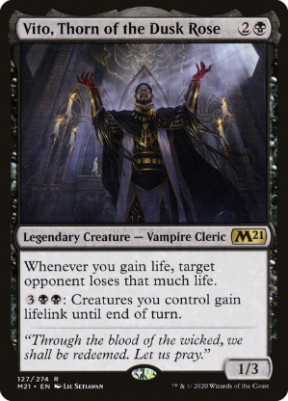
It’s preferable to play a more optimized version of a “weaker” game plan than a bad version of a more powerful strategy. A simple, yet cohesive strategy will be able to achieve its goals as a deck and actually let you play the game. While a clunky version of a powerful, complex game plan is going to leave you without the ability to do much more often.
Finding Alternatives To Expensive Cards
I think it would comfort a lot of players building budget decks to know that decks and their budget counterparts are not as different as they may seem. What I mean by this is that the vast majority of the cards in a full-priced deck and budget version will be the same.
While there are certainly exceptions to this, I find that switching 10 to 20 cards (10 to 20% of a commander deck) for budget alternatives will drastically decrease the price of the deck. Oftentimes by well over half of the overall price. Unfortunately, this still puts many decks quite expensive, but you should keep the concept in mind when looking to build on a budget.
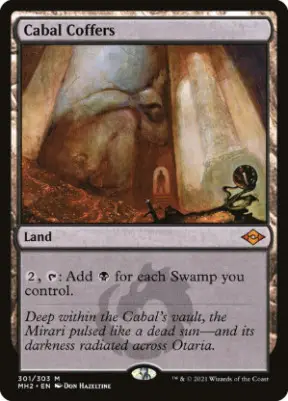
Of course, this will not always be the case but more often than not high prices come from relatively few, very expensive cards. There will be certain decks or archetypes, like 5-color Slivers, for example, that will be much harder to replicate on a tight budget.
However, in many cases, you can play 80-90% of the same cards for a fraction of the price. You will undoubtedly be giving up some advantage, those cards are expensive for a reason after all but there are lots of great budget alternatives. Case in point, Cabal Coffers and Cabal Stronghold essentially the same except the latter is another colorless to activate. It’s also only $5 compared to $20 for Cabal Coffers
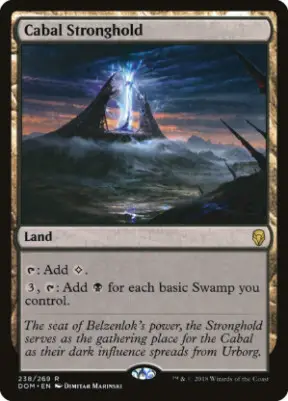
Furthermore, being a turn slower or paying an extra mana for a spell will be negligible in the vast majority of your games, and that’s assuming you draw the cards in question at all. It is worth noting that people who play very competitively stand to be punished a bit more for being on a budget than more casual players of EDH.
Budget Precons
I cannot recommend precons highly enough for new players or players looking for budget options. They are amazing products and have a really good price/value ratio. Starting with a precon will not only likely save you money, but you can immediately play EDH right out of the box.
You also get many staples like Sol Ring and Command Tower that can be used in almost any deck you build in the future. There are also two secondary commanders for each precon that allow you to play the deck differently.
Related: All MTG Commander Precons – The Complete Guide
Furthermore, there are precons available in a variety of playstyles and colors. While most of the precons are great, some are more budget-friendly than others. Let’s take a look at a few of the best-preconstructed decks for frugal buyers. These will be in no particular order as personal playstyle will dictate which one is “best.”
Grave Danger
Grave danger is part of the “Starter Commander Decks” set to release on December 2nd. As of now, each one cost around $35. All of the decks are great budget pickups but after some games online, this is by far my favorite of the set. Before I get into the games I played and why it’s my favorite, let’s look at how it works.
Simply put, this is a Zombie Tribal deck. The commander, Gisa and Geralf helps you fill your graveyard and then allow you to cast a Zombie from it once per turn. So, the deck is full of Zombies, things that make Zombie tokens, sacrifice synergies, self-mill and reanimation spells.
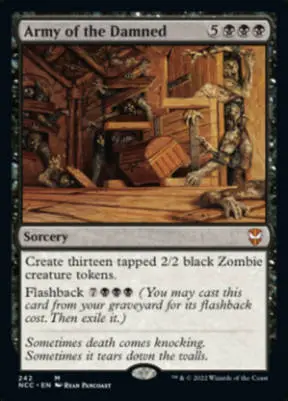
I also was very pleasantly surprised with the amount of interaction within the deck. It definitely played very well to be a $35 deck. As I said, I played some games with the list when it was spoiled (against three of the starter decks) and was very impressed.
In one game, I cast Gray Merchant of Asphodel and drained my opponents for 11, taking one out of the game and gaining 33 life. After that, I sac’d the Merchant to Vampiric Rites drawing a card and losing a life. Then, on my next turn I recast it from the graveyard with my commander and drained for another 11, taking out another player and gaining 22 more life.
It was a blast to play and if you’re looking for a fun, cheap, functional deck, look no further than this.
Planar Portal
When I first wrote this article back in early June Planar Portal was around $30. Since then, the deck has nearly doubled in price and is now sitting around $57. This however puts the deck is a little higher than what I set as our baseline idea of budget for the article.
Regardless, even at this higher price, it’s worth the money. Not only do you get a 100-card ready-to-play deck, but you also get quite a powerful one. The deck works by giving you access to lots of resources from the top of your library. Then, rewarding you with treasures for casting them. These treasures are great ramp and can lead to some explosive turns. There are a few things that make this deck a powerhouse.
First, the commander Prosper, Tome-Bound is self-sufficient and enables himself very well. By this I mean he gives you a way to exile and cast cards and a reward for doing so. He alone is both pieces of the puzzle so to speak. Second, he offers the deck great card advantage and ramp which are two key factors in playing and winning games of commander.
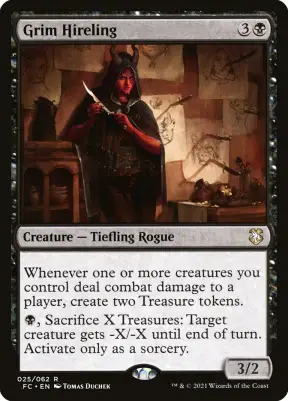
Lastly, he offers some nice versatility as you can cast the cards until the end of your next turn. This means you can play lands exiled with Prosper as your land drop on your next turn. Additionally, instants exiled on your end step can be held up as threats throughout the other players’ turns.
Further still, your commander triggers regardless of whose cards you cast from exile, and things like Etali, Primal Storm and Gonti, Lord of Luxury are a blast to play. For $57 it’s hard to beat Planar Portal.
Coven Counters
This deck is quite budget-friendly at $37. Coven Counters has a hell of a lot of bang for your buck right out of the box too. Coven Counters has a few different strategies or things it cares about. They are +1/+1 counters, making tokens and the “human” creature type. The deck wants to use these three things in conjunction to build a formidable
Where the deck really shines is its commander Leinore, Autumn Sovereign. Like Prosper mentioned above, she too is a payoff and an enabler for her abilities and offers a card advantage engine. She adds power to the
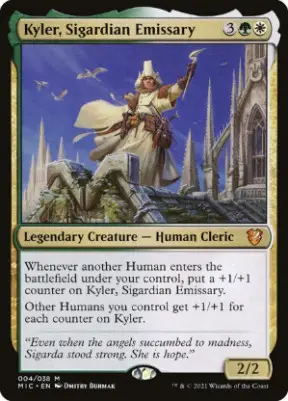
At its core, Coven Counters is a solid, creature-based deck. However, it goes about this in several ways. For example, it has “go wide” or “go tall” synergies, as well as token and tribal themes. So, not only is it budget-friendly but it appeals to many playstyles as well. At $37 it is a fantastic opinion for those looking for strong, budget options.
Quantum Quandrix
Quantum Quandrix comes from the Strixhaven: School of Mages precons and is the strongest of the bunch. At $50 it is an amazing pick-up for anyone interested in commander, budget, or otherwise. The decks’ commander Adrix and Nev, Twincasters enables a very simple but extremely powerful and fun strategy. Adrix and Nev, Twincasters works so well to enable the other 99 cards, while also having a few added perks that make the deck quite resilient.
First, she can protect herself with the “ward” ability. A commander with built-in protection makes life much harder for opponents and ensures the deck stays on course. Secondly, her static ability makes all token producers in the deck twice as good.
This is an extremely powerful effect to have in the command zone. You don’t need any special set-ups or any extra mana to make amazing things happen. All you need is your commander and something that makes tokens.
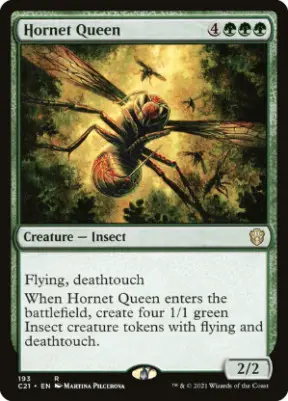
There is a plethora of strong token producers in the deck that are good even when they aren’t doubled. Furthermore, the Simic colors are great at drawing cards, mana ramp, and having interaction for opposing threats. This deck is as solid as they come and I 100% recommend it as one of the best budget pick ups.
Alternatives To Expensive Cards
Resources like EDHRec are great ways to find cards that may go well in the deck you’re building. However, whichever cards are in the most decks are the ones you’ll see first. These are often some quite expensive cards, but you can switch this by selecting “cheap” under the “By Budget” section on the left of the screen
I have compiled a list of budget alternatives to the most expensive commonly played cards in the format. Hopefully, this can be helpful for players looking to build budget decks. The key is to find which budget options slot best into your strategy.
For example Rite of Oblivion is fine replacement for Anguished Unmaking. However, in an aristocrats deck, it’s a particularly good option.
Best Commanders
Related: MTG Commander: The Ultimate Guide
With the concept of what makes budget decks “budget” and replacements for the format’s priciest cards out of the way, let’s move on to good commanders that won’t break the bank.
Having a commander within your budget is important, as building around certain commanders on a tight budget can be hard. For example, attempting a Morophon, the Boundless deck for $50, would leave you about $30 after your commander.
Not that it would be impossible to brew something, but there are certainly other commanders that you could get more of the full potential out of for your money. With that said, let’s take a look at a few good generals that are quite affordable.
Zada, Hedron Grinder – $0.40
Zada is one of the most powerful commanders that you can easily build on a budget. Anyone who has ever played against this commander knows how powerful it can be. For those you haven’t, let me bring you up to speed. With Zada in play, whenever you cast an instant or sorcery spell that targets only Zada, Hedron Grinder you copy it for each other creature you control who is a legal target. Then each one of those copies targets a different creature you control.
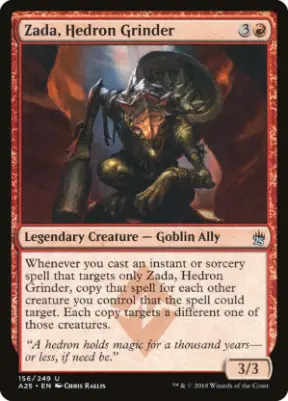
As an example, let’s say you have your commander and two goblin tokens on
Now all three creatures have haste and you draw three cards. A card like Sudden Breakthrough is another great example. In this same scenario all three creatures would get +2/+0 and first strike and you create three treasures.
The spells mentioned above cost around 15 cents each. Most of the cards played in Zada decks are common or uncommon and don’t see play in many other EDH decks, so this helps to keep the price low. Zada has a knack for making cards that would be mediocre at best in other decks, very powerful cards. Furthermore, being a mono-colored commander means that the mana base could be as simple as 30 or so mountains.
Ghalta, Primal Hunger – $2.50
Ghalta is a great budget commander to build around. It checks all the boxes we mentioned above. It’s mono-colored and has a potent but simple stompy strategy. Green also has access to great affordable ramp, card draw and strong creatures. So, even on a budget Ghalta, Primal Hunger can have you firmly covered on the fundamentals for EDH.
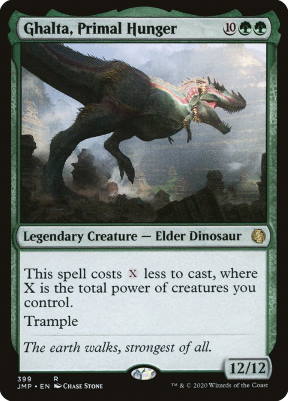
Simple cards like Llanowar Elves, Elvish Mystic, and Arbor Elf pull double-duty in the deck as they ramp you into your commander and reduce its cost via their power. While cards like Gigantosaurus and Yorvo, Lord of Garenbrig in conjunction with effects like Choose Your Weapon can have Ghalta out fast, while legitimately threatening opponents life totals as well.
Related: The Best Green Ramp MTG Cards for EDH
Much like Zada, Ghalta being a mono-colored commander means most or all of your budget can go to spells instead of lands.
Jhoira, Weatherlight Captain – $2.24
Jhoira, Weatherlight Captain is our first 2-color commander. She has very powerful card advantage that can be triggered by casting artifacts, sagas, or legendary permanents. There are tons of cheap cards in each of these categories that synergize very well with one another. Jhoira is even powerful enough to enable a combo play-style on a budget.
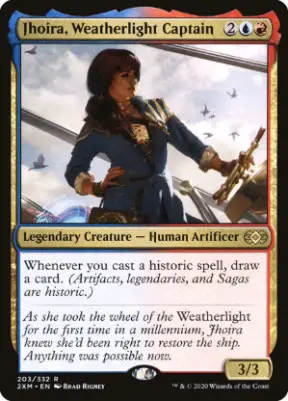
Cost reduction spells Enthusiastic Mechanaut, Foundry Inspector, and Etherium Sculptor paired with cheap or even free artifacts can draw an insane amount of cards. While cards like Reckless Fireweaver, Kessig Flamebreather, Nettle Drone, and Grapeshot, alongside Rebuild and Temporal Fissure are potential win-cons with Jhoria. Jhoria is a great commander for budget players with a taste for combo.
Feather, the Redeemed – $1.10
Feather is a great budget commander for the same reason as Zada, Hedron Grinder. Quite a bit of the spells played in the 99 of feather decks are cheap pump/draw spells that don’t see much play elsewhere. However, when you are returning the spell to your hand each turn with your commander, they generate massive value in addition to their effect.
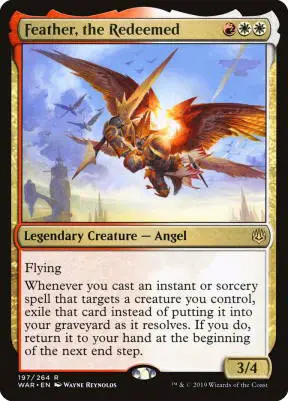
There are also tons of cheap creatures that get a boost whenever you cast or target them with an instant or sorcery spell. Things like Leonin Lightscribe, Phalanx Leader, and Anax and Cymede get out of hand quickly with this commander. In combination with spells such as Haze of Rage this is a commander that can pump out tons of damage and be tons of fun.
Tergrid, God of Fright – $4.70
As an absolute degenerate, Tergrid is my personal favorite general to play on a budget. She has some incredibly powerful effects that can be fully exploited on a budget. Take a 25-cent card like Smallpox as an example. In my experience, with Tergid on the battlefield, this will usually net you two (you also lose one) lands, one to three creatures, plus whatever your opponent’s discard. The list of cheap, low CMC spells with type of effect is nearly endless.
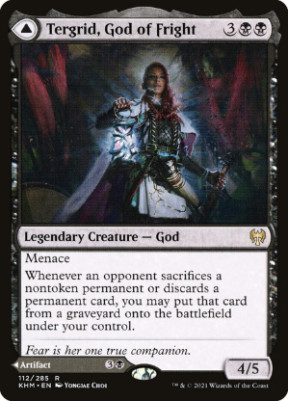
Cards like The Eldest Reborn, Awaken the Erstwhile, and Dark Deal particularly generate tons of value. Furthermore, not only do you get an abundance of free permanents, but it is also quite disruptive to opposing gameplans. There is plenty of incidental value as well, as you get opposing fetch lands and things as well.
Related: Best Black Board Wipes
How To Build A Deck
Maybe precons aren’t for you and you want to build a budget deck from the ground up. It can be a bit daughting but, it’s a super fun process. So, what is the best way to go about building a budget commander deck? Let’s assume you are at the very beginning and start from there.
Set A Budget and Choose A Deck Idea
First, determine what your spending budget is. Regardless of what the number is, having it in mind from the start will help you keep on track. Once you have your budget, find a style, color(s), archetype or theme that appeals to you in some way.
The possibilities in EDH are nearly limitless, even when building on a budget. This is the format where things like “chair tribal” exist after all. For the sake of this article, let’s say you want to build a tribal deck of giants on a budget of $45.
Find A Commander That Fits Your Idea
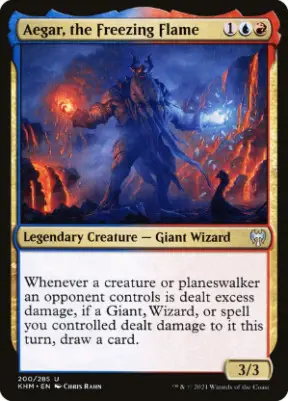
Once you have your deck basis, it’s time to find a commander that you like within that theme or archetype. Gatherer.wizards.com and EDHREC.com are great places to find a legendary creature that fits your deck. Keep in mind that EDH decks are almost always built around their commander and its abilities.
However, it’s important to balance how many of your cards (and to what degree) rely on your commander to function well. You want your cards to synergize with your commander’s abilities, but you don’t want your cards to be bad if your commander isn’t on the field, because there will be lots of times when it won’t.
Aim for your cards to be good in general and be better when your general is out and keep cards completely reliant on commander abilities to be good to a minimum. Having said that, once you have a commander you like it should be somewhat clear as to what the strategy of the deck will be. For our example deck, let’s go with Aegar, the Freezing Flame.
Tip: 1 to 2 color generals are often easier to build budget decks with.
Establish A Path To Victory
This next step is to determine how your deck will play and more importantly how it will win games. In other words, you want to have a clear gameplan and some win-conditions for the deck, even if they are broad. So, for a gaint deck, with Aegar at the helm we might say “I want to use gaints and/or wizards to deal things as much damage as possible, so I can draw cards with my commander. Then use those cards to continue to deal damage until my opponents are toast.” Whatever your gameplan may be, now you have a lens through which to evaluate cards.
Tip: Simpler or streamlined strategies work best for low budgets.
Simple Building Template
Here is a simple method for deck building that has recently come to my attention. I used it to build a Stonebrow, Krosan Hero deck recently and it worked quite well, so I thought I would share it here.
Overall, we’ll be making five separate piles of cards. Four of these piles will contain 16 cards.
Step 1: Place your commander and 35 lands (don’t worry about exactly what lands just yet) and set them to the side to be added to the deck later.
Step 2: Now we’ll begin working on four 16-card piles. The first pile is the cards that are at the core your strategy and what gives your deck its identity. Once you have these in a pile set them aside.
Step 3: This second 16 cards will be for support pieces like ramp and card draw. Put another way, these are cards that are going to help you be able to execute your gameplan smoothly.
Step 4: This pile will be for your interaction. This means single target removal,
Step 5: This is the pile with the most flexibility. These last 16-slot can be cards that didn’t quite fit into any other pile. Or they could be unique cards that help personalize your deck. Whatever they are, whenever you get this last pile assembled, you’ll have a total of 100 cards, spread-out over five piles.
Step 6: Tweak your mana base to support the cards you’ve added and then shuffle all the piles together. You’ll now have a very rough, early prototype of your deck to test and refine. With that said, there are some numbers you’ll want to adhere to if you want it to play smoothly.
So, with this very simple new method for a quick deck assembly out of the way, let me give you a much more detailed breakdown for some of the important categories for your deck.
The Numbers
Now we have our commander, our theme and our path to victory we are ready to start adding cards that fit them. However, just throwing a bunch of cards with a common theme together won’t be very cohesive. So, I am afraid I must hit you with some math. I promise it’s important though, and you’ll be glad you did it later.
There are certain things that are an intrinsic part of all commander decks regardless of strategy. They are, mana ramp, card draw, removal spells, boardwipes and lands. Every deck needs these things to be able to function well. With that said, the exact number for each category will depend on the deck and its gameplan. So, the numbers I am giving you are just a baseline.
However, don’t deviate from it too drastically without a good reason for doing so. With that out of the way. Let’s break down each area and its recommended numbers.
Mana Ramp
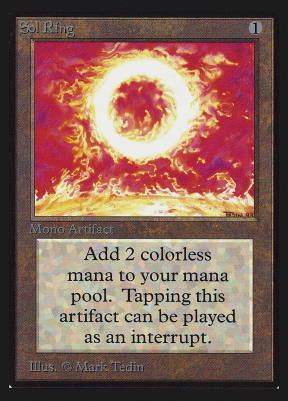
These are cards that put you ahead of your “curve” on mana. So, anything that gets you ahead of the amount of mana you would have by playing one land per turn. This is very important for casting spells ahead of schedule, casting multiple spells per turn and not falling behind other players as they ramp. You should include 10-12 ramp cards in your deck.
Card Draw
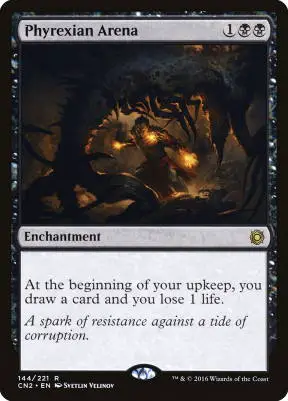
Card draw is cards or abilities that give you more cards from your library. Drawing cards is imperative to keeping a steady supply of resources and finding the cards you need to win games. You should have no less than 10 card draw spells in your deck.
Single Target Removal
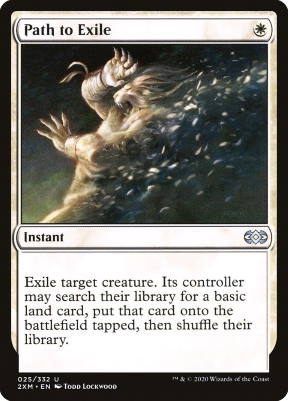
Having a way to stop what your opponents is doing is very important for keeping you in the game. Removal spells do just that. You should include 10-12 removal spells in your deck.
Board Wipes
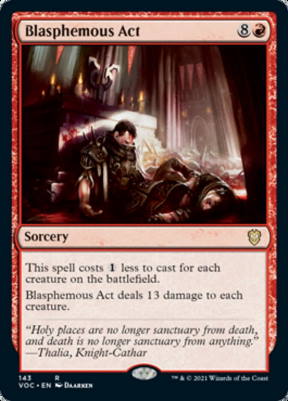
Board wipes also remove things of your opponents. However, unlike the removal mentioned above they usually remove everything of a certain type all at once. A few
Lands
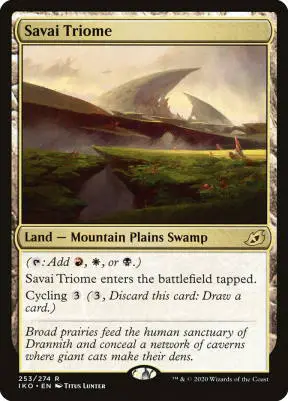
Lands are extremely important for all decks, as you can’t cast much without them. Suffice to say, you want to have plenty of lands each game. While being sure to not run so many that all you draw is lands each turn. Most decks should play 35-38 lands. This number may seem high but it’s certainly necessary for a functional deck.
This adds up to close to 70 cards so far. Meaning there are about 30 free spots left for the main components of the deck. However, in reality, there are a few more thanks to overlap between some of the categories. For example, Sublime Epiphany could be counted as both card draw and removal in the form of a counterspell.
Adding Cards That Work Well With Your Path To Victory
Now that we know what the ratios for our deck should be, we can start to find cards that work well with our “use gaints and/or wizards to deal things as much damage as possible, so I can draw cards with my commander. Then use those cards to continue to deal damage until my opponents are toast” gameplan.
For example, Squash would be a great removal spell, as it cost less if we control a giant. While Mercurial Chemister would be a good source of card draw and a way to trigger our commander.
As you start to add cards into your deck, keep your path to victory in mind and look for cards that help in multiple ways and keep your budget in mind. If you see a card with a massive price tag that is often played in the deck you are building, check the table above for a budget replacement for it.
Here is an example of what our complete deck might look like. As of the writing of this article, the list below costs $36.22 (without basic lands) from TCGplayer.
Giants and Wizards, and Damage, oh my!
For $33 we have a fairly solid list. Giants like Surtland Flinger and Cinderheart Giant can throw around a ton of damage, especially when paired with Calamity Bearer, Torbran, Thane of Red Fell, and Dictate of the Twin Gods.
There is also a ton of value to be had with the Wizard portion of the deck as well thanks to Harmonic Prodigy. Doubling up on triggers for Aegar, the Freezing Flame, Irencrag Pyromancer, Mercurial Chemister, Dualcaster Mage, and Basalt Ravager is amazing.
Also, speaking of Dualcaster Mage, it combos with Sublime Epiphany for infinite creature tokens. For a detailed breakdown of the combo, click here.
Test Before Buying
Let’s say you have now chosen your 100 cards and are satisfied they can execute your deck’s game plan. Before you purchase any significant amount of the cards (especially more expensive pieces) playtest your deck some first. It’s not uncommon, after playing a few games to find several things that don’t work as intended. This is particularly bad when building on a budget, since you can’t buy replacements on a whim.
Related: MTG Proxies: An Ultimate Guide
Playtesting can be done by probing your more expensive cards until you are certain they are worth the money. I personally test entire decks on a program called “cockatrice.” You can search the card database and build decks using any card in MTG for free.
You can then play local games against yourself, have a friend create an account and test with you or simply play online against strangers. It has been an invaluable resource for me when testing regular and budget decks before I purchase cards.
End Step
Commander is an incredibly fun format and everyone who wants to play it should get to, even if they don’t have loads of expendable cash. Luckily there are tons of budget options that are fun, functional, and even extremely powerful. I hope this article has been of some help to my fellow budget brewers. Regardless of if you play cheap decks or ones with all the bells and whistles, get to brewing and go play some elder-dragon highlander.
